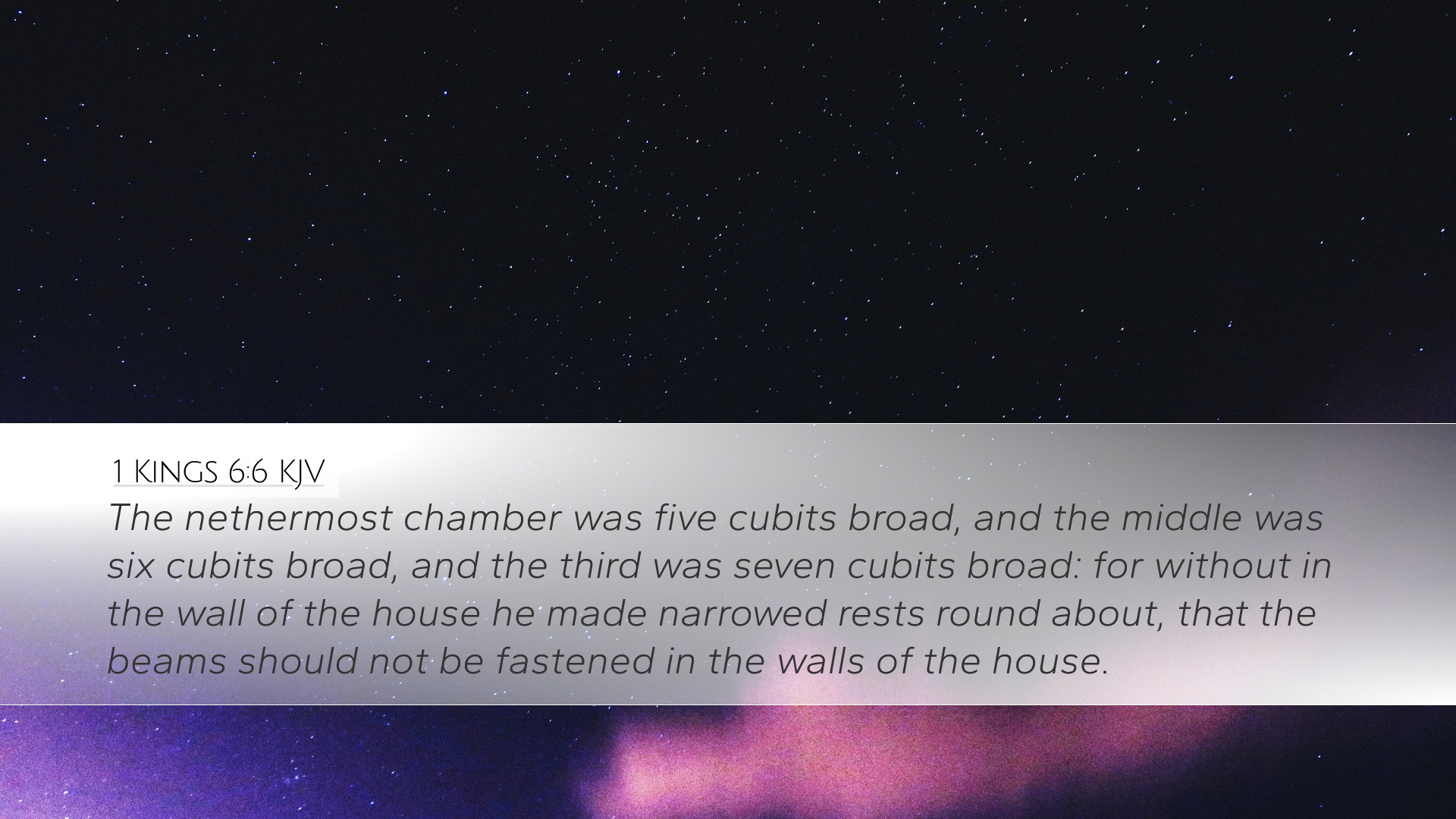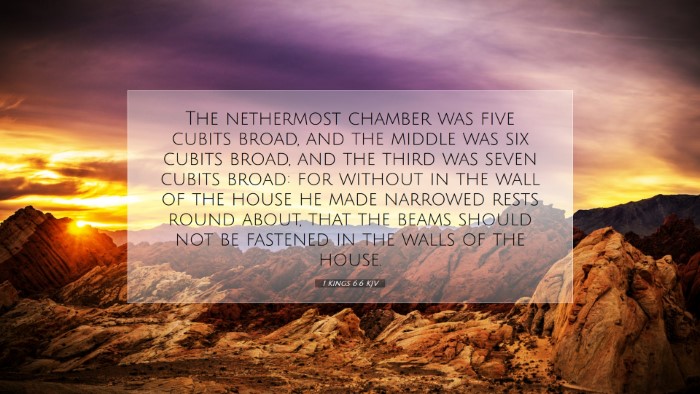Commentary on 1 Kings 6:6
Verse: "The nethermost chamber was five cubits broad, and the middle was six cubits broad, and the third was seven cubits broad: for without, in the wall of the house, he made narrow ledges round about, that the beams should not be fastened in the walls of the house."
Introduction
This verse is situated within the narrative of Solomon's Temple construction, a significant event in Israel's history. The architecture described is rich in symbolic and theological significance, providing insights into God's dwelling among His people. Commentaries by Matthew Henry, Albert Barnes, and Adam Clarke help elucidate the verse's implications for understanding this sacred space.
Architectural Analysis
The verse details the dimensions of the chambers within the Temple. Each chamber's size, progressively increasing from five to seven cubits, reflects the careful planning and divine inspiration behind the Temple's construction.
- Matthew Henry's Commentary:
Henry notes that these chambers were indeed part of the Temple’s elaborate architecture, each serving a purpose in aiding the overall design. The careful measurement signifies a divine order, suggesting that God desires His house to be built with precision and reverence.
- Albert Barnes' Notes:
Barnes observes that the varying sizes of the chambers create an interesting dynamic. The lower (nethermost) chamber is the smallest, which may illustrate a hierarchical structure – simply echoing the concept of humility in God's design. He emphasizes that such structures symbolize the ascending nature of the spiritual life.
- Adam Clarke's Commentary:
Clarke provides insights into the engineering aspects, pointing out the 'narrow ledges' designed for structural integrity. This practical approach illustrates the balance between human craftsmanship and divine direction, showcasing the importance of both elements in the construction of sacred spaces.
Theological Insights
The specifics of the Temple's construction provoke deeper theological reflection regarding God's holiness and His relationship with humanity. As pastors and theologians reflect on these details, several themes emerge:
- The Dwelling Place of God:
The chambers signify God’s desire to dwell amongst His people. As articulated by Henry, each chamber leads believers closer to the holy presence of God, reflecting the importance of accessibility to divine grace.
- Structure and Order:
The architectural harmony implicitly communicates divine order. Barnes underscores that the structured dimensions stand as a metaphor for the order God seeks in His creation, prompting believers to align their lives accordingly.
- Human Participation in Divine Plans:
Another key aspect is the collaborative effort implied in the construction. Clarke highlights that while divine guidance is paramount, human initiative in building God’s house is also crucial. This dynamic fosters a space for worship and reverence.
Practical Applications
From these exegetical insights, several applications can be considered by pastors and church leaders:
- Worship Architecture:
The design of church buildings can reflect the sacredness of worship. Leaders should strive to create worship spaces that honor God's presence, inspired by the significance of the Temple's layout.
- Community of Believers:
The chambers can be viewed as representing the community of believers working together, each fulfilling a specific role within the body of Christ. The varied sizes symbolize diverse gifts within the church.
- Spiritual Growth:
As spiritual growth involves moving from a basic understanding of faith to deeper insights, the increasing chamber sizes serve as a reminder that believers are called to progress in their relationship with God.
Conclusion
1 Kings 6:6 is layered with meanings that transcend its architectural description. It serves as a touchstone for discussions on divine presence, community, and worship. As we contemplate Solomon's Temple, let it encourage both individual and communal efforts to build spaces that facilitate encounters with God.


